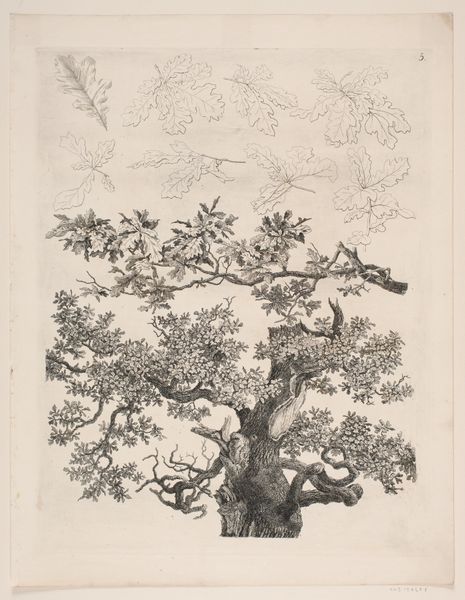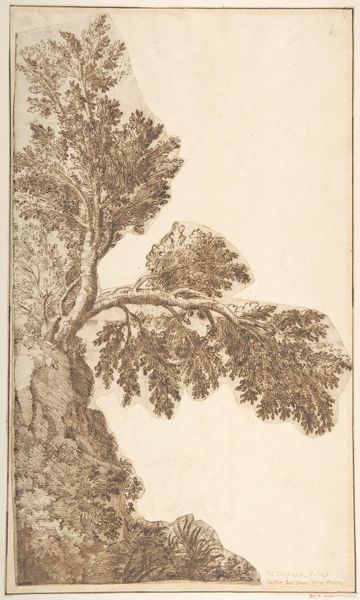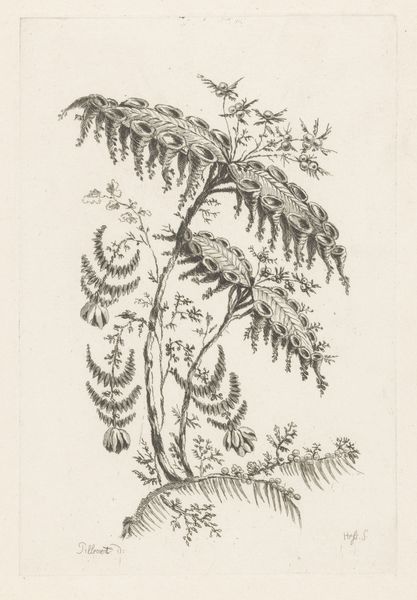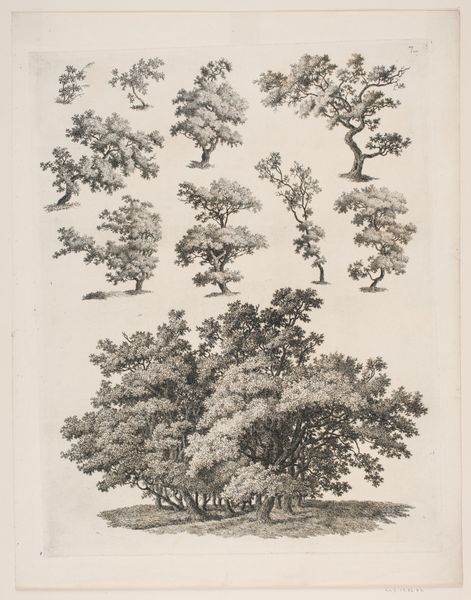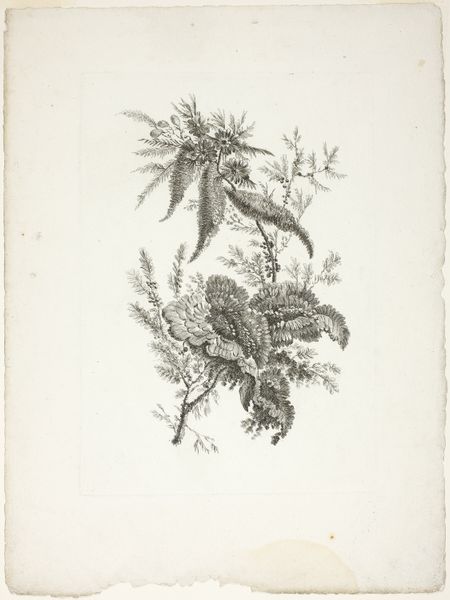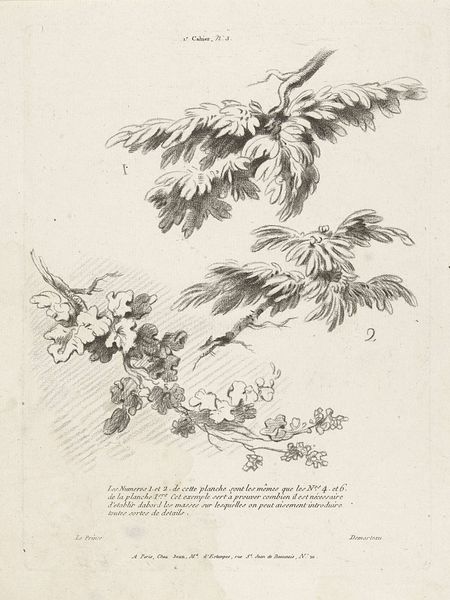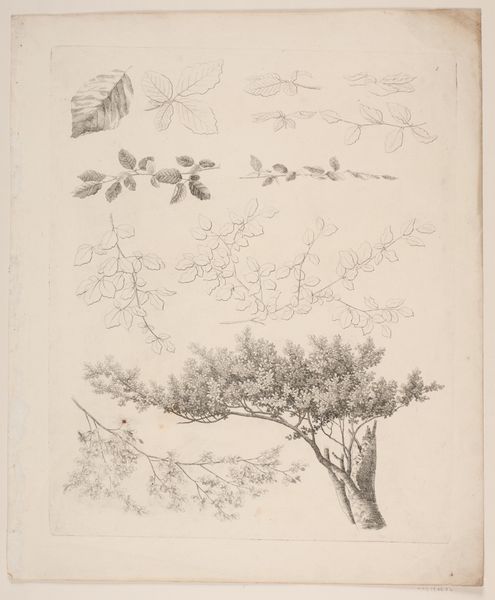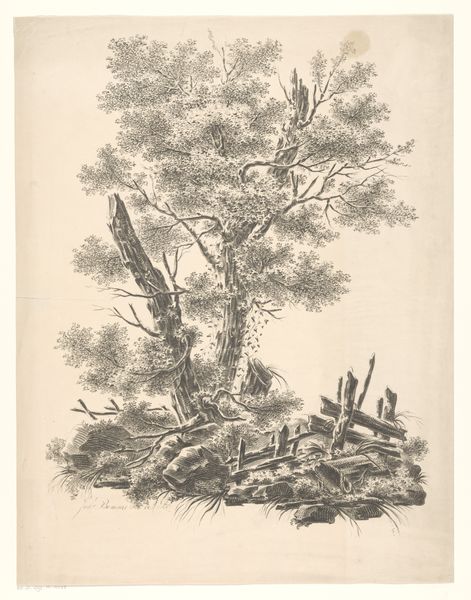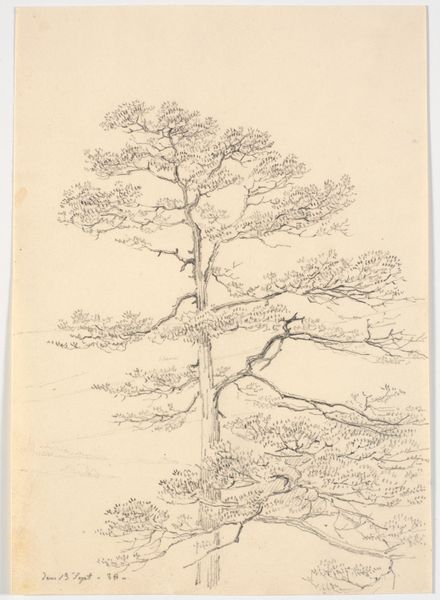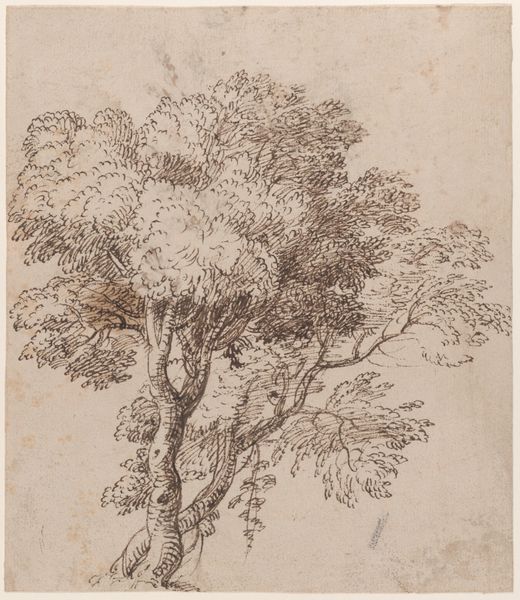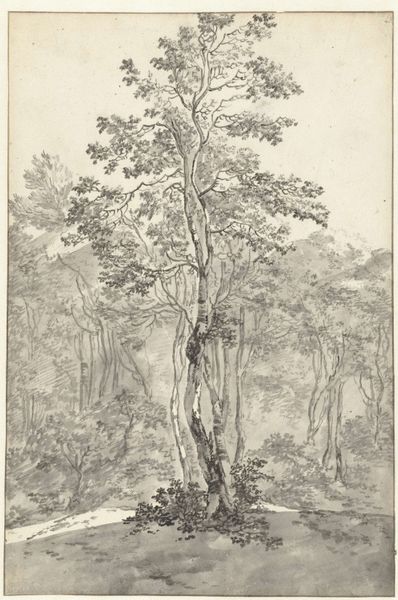
drawing, print, etching
#
drawing
#
baroque
# print
#
etching
#
landscape
Dimensions: height 305 mm, width 236 mm
Copyright: Rijks Museum: Open Domain
Editor: Here we have Gilles Demarteau's "Study of Branches with Leaves," made sometime between 1732 and 1776. It's an etching, and feels very much like a botanical illustration, but with an artistic flourish. I'm curious about the different specimens and their almost diagrammatic arrangement. What strikes you about this piece? Curator: The 'diagrammatic arrangement' you mentioned is fascinating when viewed through the lens of the Enlightenment's obsession with cataloging and classifying the natural world. Etchings like this one weren't just about depicting nature; they were about controlling it, ordering it through observation and representation. Who was the audience? Probably educated elites who sought to understand and categorize the world around them. Editor: So, it's more than just a pretty picture? It’s a statement about how people wanted to understand their world? Curator: Precisely. The act of isolating these branches, labeling them "A," "B," "C," etc., and even including descriptive text below reflects the scientific impulse to dissect and analyze. It suggests an almost clinical approach to the appreciation of nature. The printing press democratized images and these were meant to educate as much as to decorate. How would something like this image play into civic understanding of environmental resources? Editor: That makes me think about the role of art in shaping public opinion back then, and even today. Was Demarteau perhaps also making a subtle argument about the value and understanding of botany within a broader social or political context? Curator: Exactly! The politics of imagery always simmer beneath the surface. The act of representation is never neutral; it reflects the priorities and power structures of a given society. Think about the rise of botanical gardens and natural history museums during this period – how did these spaces and images like this inform social status? Editor: That’s really interesting. I’m starting to see how seemingly simple nature studies like this can actually tell us a lot about the world, who had access to it, and how they understood it. Curator: And perhaps, even how they sought to manage and exploit it. The ‘Study of Branches’ becomes a reflection of a culture eager to master its environment, through art and through science.
Comments
No comments
Be the first to comment and join the conversation on the ultimate creative platform.
